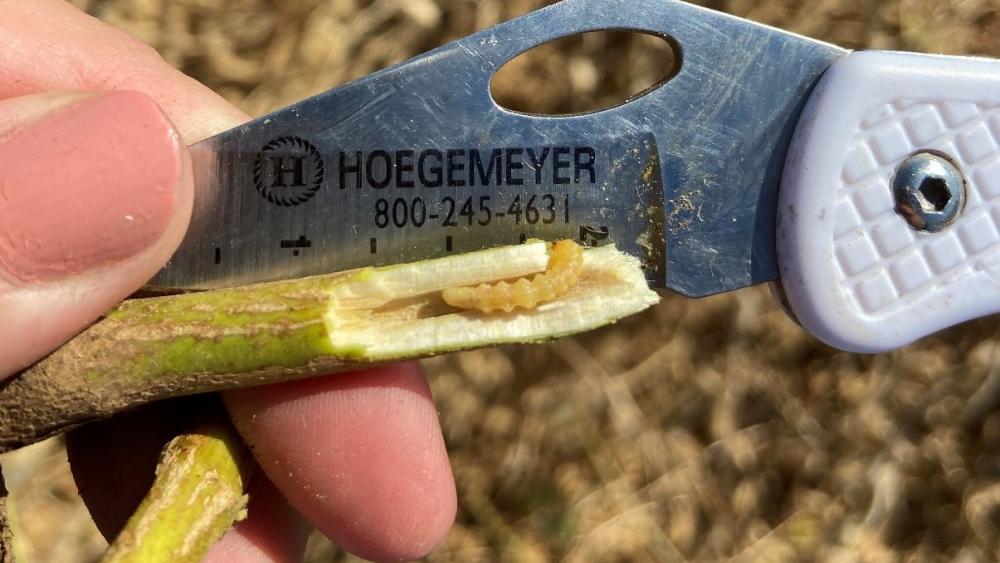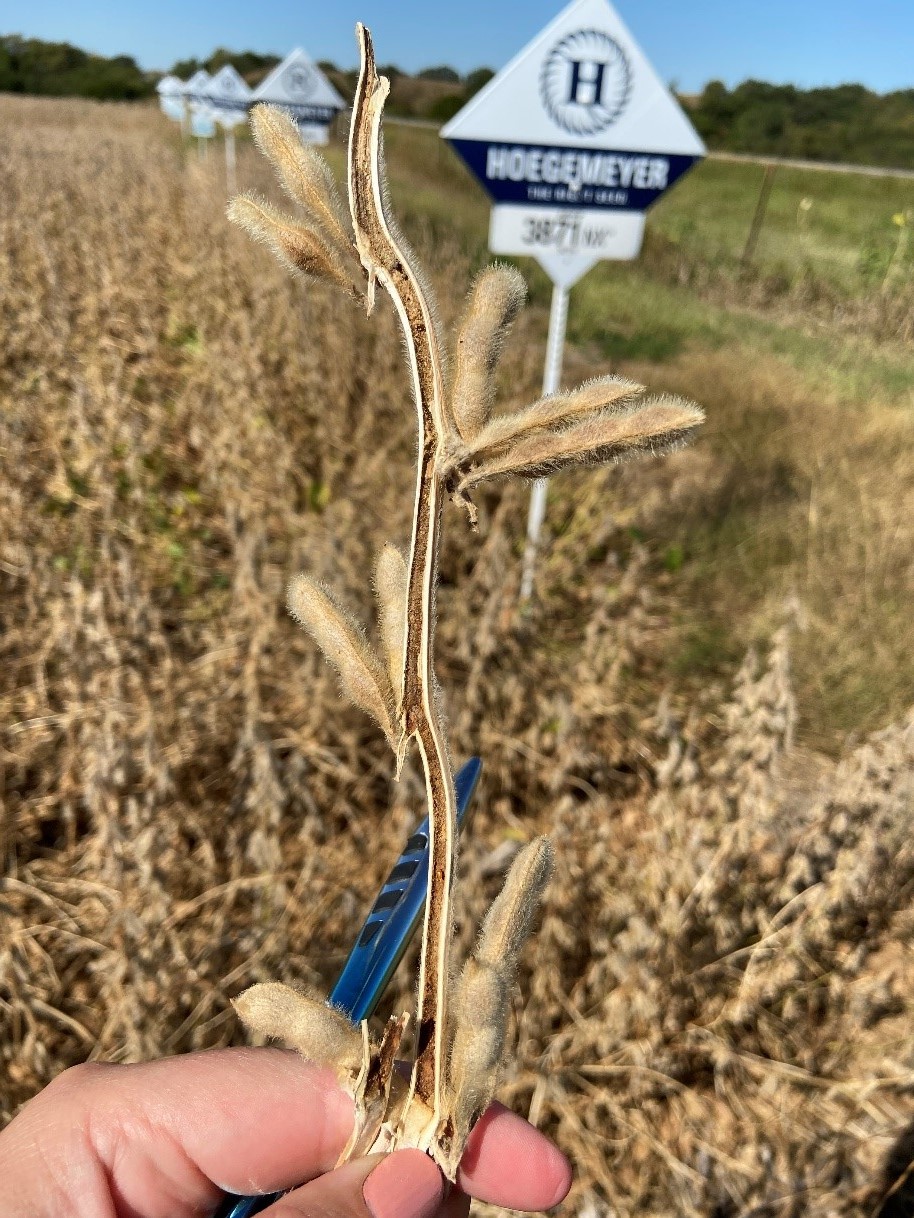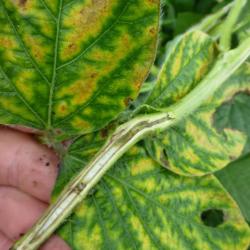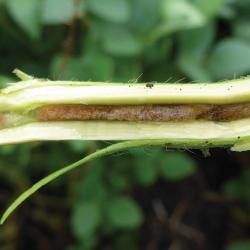Dectes Stem Borer in Soybeans
Dectes Stem Borer in Soybeans. How to identify it and what management strategies are available?
Soybean fields throughout Kansas have been observed to have dectes stem borer. Dectes stem borer is a beetle pest that occurs in the southern portion of the United States. It can feed off sunflowers, soybeans, and weed species like ragweed and cocklebur. The beetles emerge in Kansas in late June-early July. Females will lay eggs in the lower canopy of the plants and when the eggs hatch the larvae burrow into the plant stem. A petiole or leaves in the lower canopy starting to wilt are signs that the larvae have burrowed into the stem. Splitting stems will show the burrow pathway and eventually the larvae can be found. The stem borer pathway turns brown and can also be confused with late-stage infection of brown stem rot (BSR). See attached photos to help identify the differences. Later in the season, the larvae move to the base of the stalks to overwinter. This is when stalk girdling occurs and lodging issues happen. Early harvest of heavily infested fields will help with preventing yield losses from lodging. Sample several areas in the field splitting several plants to see which fields have the highest pressure of stem borer.
Management options:
- Crop rotation to non-host crops
- Control weedy hosts in fields and surrounding waterways
- Tillage can help reduce overwintering larvae numbers but are not necessarily the most effective option if surrounding fields have heavy pressure and are no-till
- Insecticides are not highly effective forms of control mainly due to the extended emergence of the beetles and the larvae being protected from insecticides once in the stem




If you have further questions around soybean fields that may have dectes stem borer or discussion around which ones to decide on harvesting early reach out to your local Hoegemeyer DSM or agronomist.
- Teal Mills, Southern Product Agronomist
Sources
